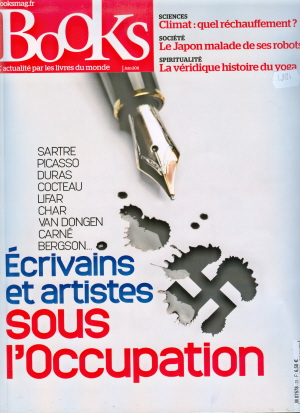Hannah Arendt : Những Nguồn Gốc Của Chủ Nghĩa Toàn Trị.
Lời Tựa lần xuất bản đầu (1951).
Weder demVergangenen anheimfallen noch
dem Zukunftigen. Es kommt darauf an, ganz gegenwartig zu sein.
K. Jaspers...
Dịch thuật | Dịch ngắn | Đọc sách | Độc giả sáng tác | Giới thiệu | Góc Sài gòn | Góc Hà nội | Góc Thảo Trường
Giai thoại | Potin | Linh tinh | Thống kê | Viết ngắn | Tiểu thuyết | Lướt Tin Văn Cũ | Kỷ niệm | Thời Sự Hình | Gọi Người Đã Chết
Thơ Mỗi Ngày | Chân Dung | Jennifer Video
Nhật Ký Tin Văn / Viết mỗi ngày
|
|
Last Page
1 YEAR AGO TODAY
Sun, Dec 21, 2014
Tội ác từ hơn một thế kỷ vẫn còn nóng hổi: Walter Benjamin, triết gia Đức gốc Do Thái cho rằng, với lịch sử, cho dù chỉ một chi tiết cỏn con, cũng không bị mất mát, rồi cũng có ngày lòi ra ánh sáng. Hơn một thế kỷ, kể từ khi Hoàng Đế Bỉ Leopold II biến xứ Congo thành thuộc địa của riêng mình, một cuộc điều tra hiện nay đang được mở ra để tìm hiểu về những tội ác đã lâu ngày bị bỏ quên, mà nước Bỉ, qua Hoàng Đế và quân đ... Continue Reading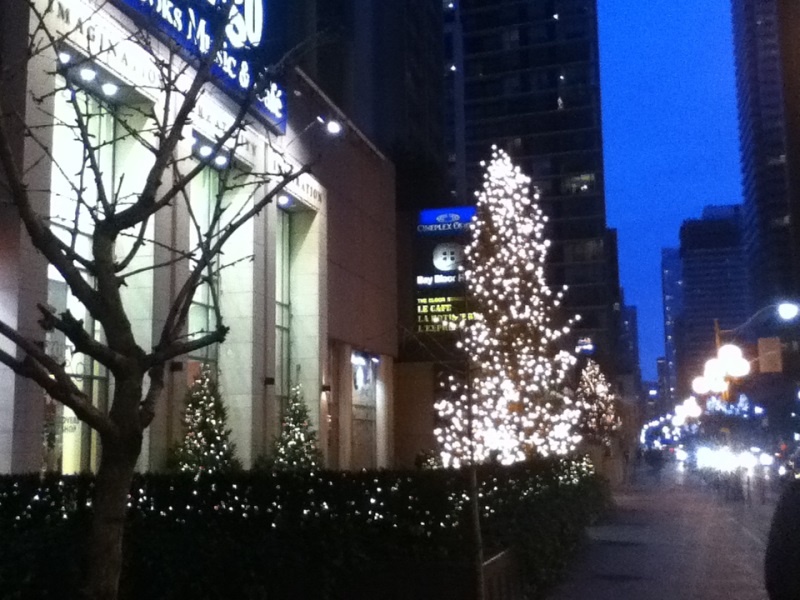
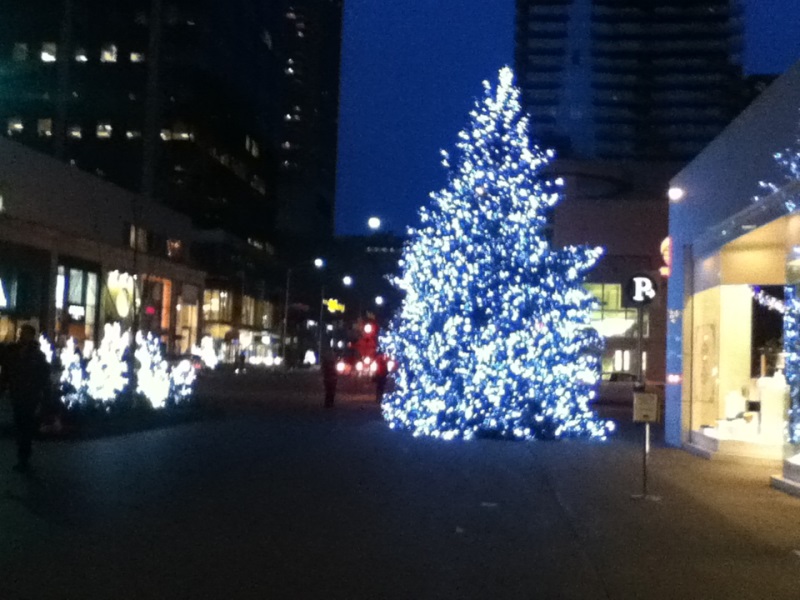
20.12.2015 by iPod Noel 2015 Noel năm nay, Toronto không có tuyết. Không huy hoàng như mọi năm, có thể do khủng bố, và bận đón tiếp di dân 
manhhai SAIGON 1966-67 - Central Post Office - by Capt. Ted R. Snediker Đêm Thánh Vô Cùng Đêm Thánh Vô Cùng Trước 1975, tôi làm ở… bên trong Bưu Điện. Sau 1975,
tôi làm ở… bên ngoài, ở vỉa hè tòa nhà Bưu Điện, kế bên Nhà Thờ Đức
Bà. Viết mướn. Điện tín, thư từ tiếng Anh, tiếng Pháp, và tiếng Việt.
Thân chủ đa số là những người có bà con, thân nhân vượt biển, đang
ở trại tị nạn, hoặc đã định cư nơi nước ngoài. Quoc Tru Nguyen
Tks. Merry Christmas and Happy New Year To
All There
Thơ Mỗi Ngày 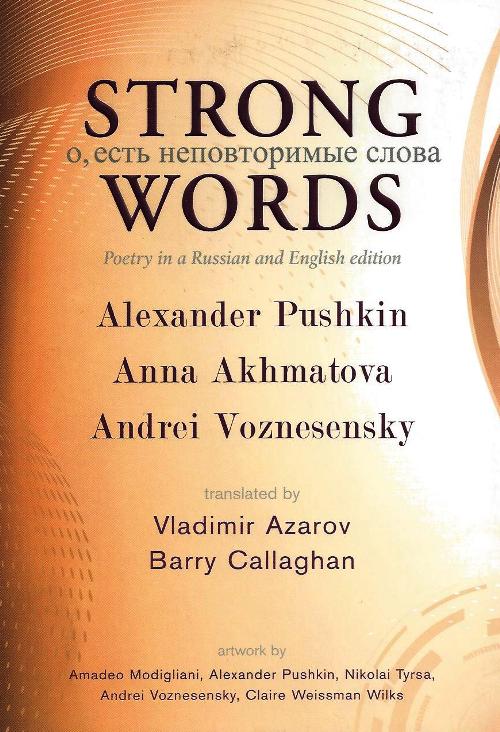
Strong words I had forgotten I had forgotten in my heart
How to weep, how to suffer pain, How, through poetry, to impart In all its rapture, love, again! But then-in the wine-dark sea Of ecstasy, I revive ... Tormented, tearful, I thrive, Words rhyme, come alive in me. Lướt Tin Văn 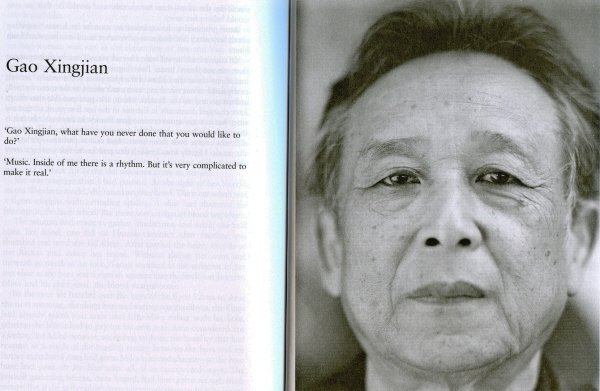
Âm nhạc. Trong tôi có 1 nhịp điệu. Nhưng quá khúc mắc không làm sao biến nó thành thực Trong Gấu cũng có 1 “nhịp
điệu”, chỉ đến khi vô tù VC thì mới thành thực.
Mít vs Lò
ThiêuNhạc vàng, nhạc sến: Chỉ đến khi vô tù, thì Gấu mới thực sự được nghe nó, cảm nhận ra nó, và có lại được luôn cả cuộc đời của mình! Bà Tám liked this.Nga Nguyen shared Huỳnh Kim Cao Thị's post.Lời Vàng ......Sadhu ....Sadhu ! Huỳnh
Kim Cao Thị
CHỈ CÓ 2 ĐIỀU THÔI + Có 2 thứ bạn nên tiết kiệm, đó là sức khỏe và lời
hứa. 13 Like
Câu của Dalai Lama, với GCC, có tí khác, và đúng là cuộc đời của GCC, ứng vào lần gặp lại cô bạn, ở trong Kiếp Khác, ở nước ngoài, những ngày đầu tới Xứ Lạnh. Hãy sống tới cùng kiệt, cuộc đời của mày, mà không 1 lần phải biên tập nó - biên tập theo cái nghĩa mà Brodsky giải thích - thì về già mi lại được dịp sống lại nó, với tất cả ân sủng. Đó là lần nghe bản After the Sunrise của Yanni Số
này còn 1 bài về khẩu AK-47, dịch từ tờ Ðiểm Sách Luân Ðôn, rất
thú vị. Tuy nhiên, bài viết không nói tới sự khủng khiếp của tiếng súng
AK-47. Người dân Sài Gòn những ngày Mậu Thân đã từng được hưởng
kinh nghiệm này, và GNV từng lèm bèm về nó, và tin rằng, thứ âm thanh
quay vòng tròn, surrounded, là được mặc khải từ tiếng AK. Và cùng với
nó là vấn nạn thật căng:
Bạn phải trải qua cái “khủng” rồi mới hiểu được sự chuyển hóa, từ “khủng” qua “tuyệt” được. Vì lý do này mà đám bỏ chạy bợ đít VC mới không làm sao phân biệt được, giữa “pháo kích” và “oanh kích”. Chúng tra từ điển, rồi phán, như nhau! Một tên Tây mũi tẹt dịch “tình yêu như trái phá” ra tiếng Tẩy là “cú sét đánh”, ra tiếng Anh là “yêu từ cái nhìn đầu tiên”! Và trên tất cả, chúng chẳng biết cái hay của, chỉ một bản nhạc sến, hay chỉ một lời nhạc, thí dụ như câu này, trong bản Kẻ ở miền xa: Ngoài kia súng nổ đốt lửa đêm đen tầm đạn thay tiếng em! GNV có một bài viết thật là tuyệt [nhưng vẫn chưa viết ra được !], về kinh nghiệm khủng khiếp này, lần đầu tiên nghe bản nhạc After the Sunrise, của Yanni. Như thể, bạn nghe bản nhạc, và cùng lúc sống lại tất cả cuộc chiến, cứ mỗi nỗi đau của bạn, là được đền bù bằng 1 nốt nhạc! Liên quan tới vấn đề này, còn là câu phán hiển hách của Gấu Cà Chớn, văn chương Miền Nam cuối cùng chỉ đọng lại trong mấy bản nhạc sến! Ðể hiểu câu này, bạn phải đã có lần đi tù VC, và hành lý mang theo chỉ là mấy bản nhạc sến trong ký ức, và mỗi bản nhạc, nó giống như 1 cái lỗ đen, nén cả một cuộc đời của bạn, và có dịp, là nó nổ bùng ra, như 1 cú nổ của mặt trời! Simone Weil, to whose writings I am profoundly indebted, says: "Distance is the soul of beauty." Yet sometimes keeping distance is nearly impossible. I am A Child of Europe, as the title of one of the my poems admits, but that is a bitter, sarcastic admission. I am also the author of an autobiographical book which in the French translation bears the title Une autre Europe. Undoubtedly, there exist two Europes and it happens that we, inhabitants of the second one, were destined to descend into "the heart of darkness of the Twentieth Century." I wouldn't know how to speak about poetry in general. I must speak of poetry in its encounter with peculiar circumstances of time and place. Today, from a perspective, we are able to distinguish outlines of the events which by their death-bearing range surpassed all natural disasters known to us, but poetry, mine and my contemporaries', whether of inherited or avant-garde style, was not prepared to cope with those catastrophes. Like blind men we groped our way and were exposed to all the temptations the mind deluded itself with in our time. Czeslaw Milosz: Nobel lecture [Diễn từ Nobel văn chương] Cái gọi là "Distance is the soul of beauty", “Khoảng cách là linh hồn của cái đẹp”, chính là cái khoảng cách giữa 1 bản nhạc sến bạn nghe trước 1975, và cũng nó, khi bạn nghe ở trong tù VC! Khi TTT đọc truyện đầu tay của Gấu, Những con dã tràng, gửi thẳng xuống tòa soạn Sáng Tạo, ông về nói với bà cụ, thằng Trụ nó sẽ đi xa hơn DNM. Ông không hề nói Gấu viết hay hơn DNM. Điều gì làm ông phán như thế. Hẳn là ông tin vào cái sự biết tí ti ngoại ngữ, cái sự học xong Trung Học… Nói rõ hơn, với ông, không có thứ nhà văn tự phát hoài hoài, cái mầm văn học ở trong bạn phải được nuôi dưỡng bằng kinh nghiệm sống, bằng sức đọc, sức xâm nhập vào thời của bạn. Truyện ngắn không được đăng, vì Sáng Tạo chết liền sau đó. Sau Gấu thấy tên của Gấu, khi đó ký Sơ Dạ Hương, ở trong mục hộp thư của tờ Văn Nghệ của Lý Hoàng Phong, và "băng" của ông. Không đăng. Tuy nhiên, Gấu chẳng hề để ý đến nữa. vì còn lo học. Chỉ mãi đến khi ăn mìn VC, nằm nhà thương Grall, đọc 1 bài thơ của CTC đăng trên báo Nghệ Thuật, thì Gấu mới có lại cái hứng viết. Và đó là cái truyện ngắn Những ngày ở Sài Gòn. Khi viết Những con dã tràng, truyện ngắn hay nhất của Gấu, đúng theo nghĩa truyện ngắn, tuy được TTT khen, nhưng bản thân, Gấu biết, đây không phải là dòng văn chương của mình! Cái thứ nhân vật hục hặc với đời sống, không phải týp của Gấu. Chỉ đến khi nhận ra điều này, thì Gấu mới hiểu “sẽ đi xa hơn DNM”, có nghĩa là gì. Chỉ đến khi viết được Những ngày ở Sài Gòn, thì Gấu mới tin được, mình sẽ trở thành nhà văn! Khi đó, Gấu đã kiếm ra Thầy của mình. Khi gặp BHD, Gấu nhận ra liền, tuổi thơ của thằng cu Bắc Kỳ, nhà quê, thấp thoáng ở trong dáng đi, nụ cuời ánh lên mầu da đen nhẻm cùng với chiếc răng khểnh của Em, là vậy. Ngoài ra, còn là nỗi ước mong, BHD cầm giữ suốt cuộc đời còn lại của Gấu! Hà, hà! Nhưng, bằng cách nào mà BHD lại ‘thấu thị’ ra tất cả, và, bèn bỏ Gấu, và vừa đi vừa ngoái lại, lắc đầu: Mi đâu có thương yêu gì ta! Mi thương một đứa con nít 11 tuổi, là ta đời thuở nào, và Hà Nội của mi ở trong con bé con đó! Khủng khiếp nhất, là, kể từ khi Gấu lấy một em "miệt vườn" làm vợ, cái xứ Bắc Kít trả thù mới tàn bạo làm sao: Ta nguyền rủa đời mi, hễ cứ gặp bất kỳ một em Bắc Kít, là khốn khổ khốn nạn, là bấn xúc xích, là đều nhìn thấy một BHD của mi ở trong em đó! Cuộc tình chót đời, vào lúc sắp xuống lỗ, đơn phương, của Gấu, là... tưởng tượng ra 1 em Bắc Kít, lấy chồng ngoại, và khi được hỏi, tại sao không lấy Mít, và, tại sao không lấy 1 tên Bắc Kít, Em trả lời, tụi khốn đó đâu có biết trọng đàn bà, nhất là đàn bà đã có 1 đời chồng mất đi vì cuộc chiến! Thế là Gấu bèn tưởng tượng tiếp, ta sẽ là tên Mít đó, tên Bắc Kít đó, và ta nói, ta yêu Em, và chắc chắn em sẽ tin. Nói tiếng Vịt, tất nhiên: Anh "thươn" EM! [Em gốc “rau muốn”, thành “giá sống”, từ 1954] Ui chao, Em tin thiệt! Gấu nhận được cái mail sau cùng của Em, chắc là trong mơ, mới tuyệt vời làm sao: Tui bận lắm, đâu có thì giờ rảnh mà trả lời mail của anh. Nào chồng, nào con, nào công việc chùa chiền, nào.. ‘viết’ nữa. Nhưng cũng ráng viết vài dòng… Ui chao GNV lại nhớ đến nhân vật của Camus, lo hết cuộc đời trần tục này, rồi nếu có tí dư, thì dành cho… trăng sao, và cho Gấu! Tks. Take Care. Plse Take Care. NQT James Joyce có lần nói, tất cả các tiểu thuyết gia chỉ có mỗi một chuyện, và họ nói đi nói lại hoài, mỗi chuyện đó. Gấu cũng đã từng bị mấy đấng độc giả quen biết phán, chỉ có mỗi chuyện Mậu Thân, đứa em trai tử trận, và BHD, kể đi kể lại hoài! Tuy nhiên, quái đản nhất, là chuyện BHD: mọi cuộc tình của Gấu, đều chỉ để lập lại chuyện tình BHD! Trừ cô bạn, cô phù dâu ngày nào. Khủng khiếp quá. Đúng là sự trả thù ngọt ngào, bi thương, và cũng dã man, tàn nhẫn, của xứ Bắc Kít! 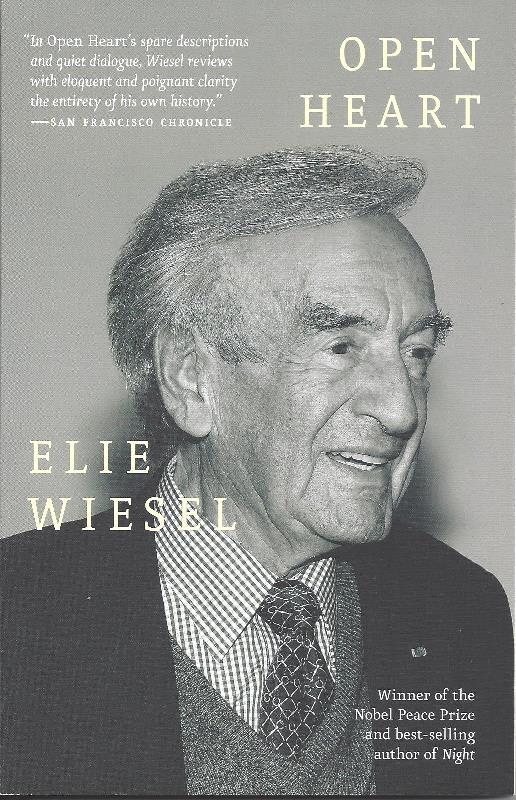
Cuốn này, là 1 ông già, sống sót Lò
Thiêu, viết cho/viết về mấy đứa cháu.
Đọc loáng thoáng ở tiệm sách, thằng cháu hỏi, khi nghe ông nói, ông yêu nó, nếu cháu yêu ông nhiều, thì ông đỡ đau? Ông nó bị bịnh tim Có thể, thằng bé nhìn thấy điều đó, trên khuôn mặt người ông. Đây cũng là lời chúc SN GCC, của 1 vị bằng hữu. 23 ONE DAY at the beginning of my convalescence, little Elijah, five years old, comes to pay me a visit. I hug him and tell him, "Every time I see you, my life becomes a gift." He observes me closely as I speak and then, with a serious mien, responds: "Grandpa, you know that I love you, and I see you are in pain. Tell me: If I loved you more, would you be in less pain?" I am convinced God at that moment is smiling as He contemplates His creation. 25 A CREDO that defines my path: I belong to a generation that has often felt abandoned by God and betrayed by mankind. And yet, I believe that we must not give up on either. Was it yesterday-or long ago-that we learned how human beings have been able to attain perfection in cruelty? That for the killers, the torturers, it is normal, thus human, to act inhumanely? Should one therefore turn away from humanity? The answer, of course, is up to each of us. We must choose between the violence of adults and the smiles of children, between the ugliness of hate and the will to oppose it. Between inflicting suffering and humiliation on our fellow man and offering him the solidarity and hope he deserves. Or not. I know-I speak from experience-that even in darkness it is possible to create light and encourage compassion. That it is possible to feel free inside a prison. That even in exile, friendship exists and can become an anchor. That one instant before dying, man is still immortal. There it is: I still believe in man in spite of man. I believe in language even though it has been wounded, deformed and perverted by the enemies of mankind. And I continue to cling to words because it is up to us to transform them into instruments of comprehension rather than contempt. It is up to us to choose whether we wish to use them to curse or to heal, to wound or to console. As a Jew, I believe in the coming of the Messiah. But of course this does not mean that the world will become Jewish; just that it will become more welcoming, more human. I belong, after all, to a generation that has learned that whatever the question, indifference and resignation are not the answer. Illness may diminish me, but it will not destroy me. The body is not eternal, but the idea of the soul is. The brain will be buried, but memory will survive it. Such is the miracle: A tale about despair becomes a tale against despair. SN-GCC, 2015

HAPPY 78TH BIRTHDAY.
Today at 6:01 PM
CHÚC LUÔN KHỎE ĐỂ GIỮ TIN VĂN ĐỘC ĐÁO VỚI THƠ VÀ SINH HOẠT VĂN CHƯƠNG THẾ GIỚI . CHÚC LUÔN NHỚ ĐỂ NHỮNG "ĐỜI" TRƯỚC MÃI VẪN ĐẬM TRONG KÝ ỨC CHÚC LUÔN QUÊN ĐỂ NHỮNG "THNM" MẤT DẤU BỚI HOÀI TRONG TRÍ VẪN KHÔNG RA CHÚC LUÔN AN ĐỂ HƯỞNG HẠNH PHÚC BÊN CẠNH NHỮNG NGƯỜI THÂN YÊU ĐANG HIỆN DIỆN K Đa tạ. GCC 
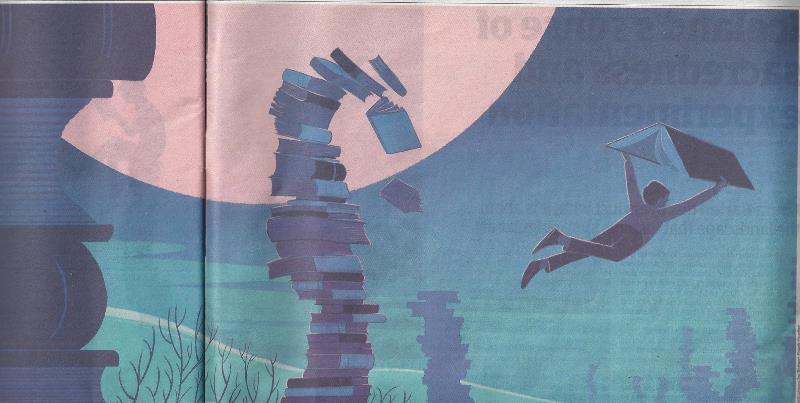
Guardian Weekly 18.12.2015: Books of the Year Tam Ích đã từng leo lên tháp sách như thế, để đưa đầu vô cái thòng lọng 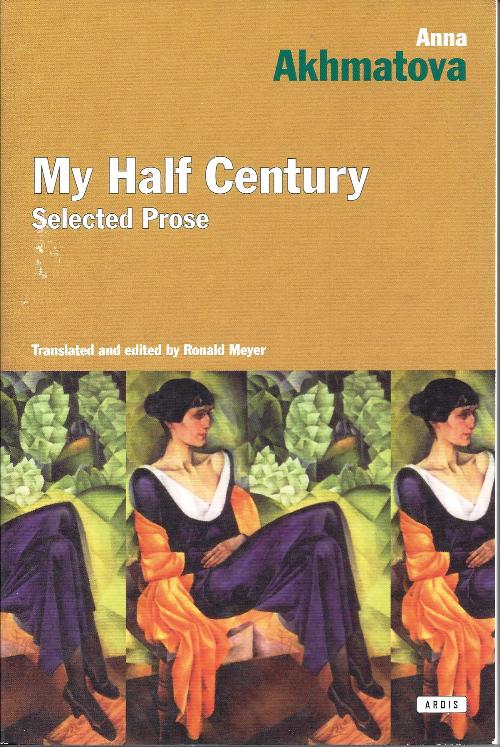
Akhmatova: Nửa Thế Kỷ Của Tôi PUSHKIN AND CHILDREN
ALTHOUGH PUSHKIN THOUGHT OF himself least of all as a "children's writer," the term that is now commonly accepted (when Pushkin was asked to write something for children, he flew into a rage ...) although his fairy tales were certainly not intended for children and the famous introduction to Russian was not addressed to a child's imagination either, the fates have decreed that his works be destined to serve as a bridge between Russia's great genius and children. We have all heard innumerable times three-year-old performers recite "the learned cat" and "the weaver and the cook'? and have seen how the child's little pink finger points to the portrait in the child's book-and he is called "Uncle Pushkin." Everyone knows and loves Yershov's The Little Humpback Horst', too.' However, I've never heard "Uncle Yershov." There is not and has never been a single Russian-speaking family in which the children could remember when they first heard that name and saw that portrait. Pushkin's poetry bestows to children the Russian language in all its splendor, a language they perhaps will never hear again and will never speak, but which, nevertheless, will be with them like an eternal treasure. During the anniversary days of 1937, the appropriate commission resolved to remove the Pushkin monument, which had been erected in a darkish square in a part of the city that did not even exist in Pushkin's time, and place it on Leningrad' Pushkin Street. They dispatched a freight crane -in general everything required in such situations. But something unprecedented took place: the children who were playing by the monument in the square raised such a howl that they were forced to telephone the commission to ask what should be done. The answer: "Let them have their monument"-and the truck left empty. One can say with absolute certainty that at that difficult time a good half of those children had lost their fathers (and many their mothers as well), but they considered it their sacred duty to protect Pushkin. The City
THE WORLD OF ART artists had a sense of Petersburg's "beauty" and it was
they, incidentally, who discovered mahogany furniture." I remember Petersburg
from very early on-beginning with the 1890s. It was essentially Dostoevsky's
Petersburg. It was Petersburg before streetcars, rumbling and clanking horse-drawn
trams, boats, signs plastered from top to bottom, unmercifully hiding the
buildings' lines. I took it in particularly freshly and keenly after the
quiet and fragrance of Tsarskoe Selo. Inside the arcade there were clouds
of pigeons and large icons in golden frames with lamps that were never extinguished
in the corner recesses of the passageways. The Neva was covered with boats.
A lot of foreign conversation on the street. Many of the houses were painted red (like the Winter Palace), crimson, and rose. There weren't any of these beige and gray colors that now run together so depressingly with the frosty steam or the Leningrad twilight. There were still a lot of magnificent wooden buildings then (the houses of the nobility) on Kamennoostrovsky Prospect and around Tsarskoe Selo Station. They were torn down for firewood in 1919. Even better were the eighteenth-century two-story houses, some of which had been designed by great architects. "They met a cruel fate"-they were renovated in the 1920s. On the other hand, there was almost no greenery in Petersburg of the 1890s. When my mother came to visit me for the last time in 1927, she, along with her reminiscences of the People's Will, unconsciously recalled Petersburg not of the 1890s, but of the 1870s (her youth), and she couldn't get over the amount of greenery. And that was only the beginning! In the nineteenth century there was nothing but granite and water.
Thông
điệp gửi thế kỷ 21
Viết mỗi ngày Notes on a Voice Virginia Woolf
A knitter with a knack for words
Imogen West-Knights | January/February 2016 “I enjoyed talking to her, but thought nothing of her writing. I considered her a beautiful little knitter.” So wrote Edith Sitwell of an afternoon she spent with Virginia Woolf. Not much of Woolf’s knitting survives, but nine novels and dozens of short stories, essays and diaries do. Woolf is now upheld as one of the founding figures of modernism. Born in 1882 into an artistic household in Kensington, she grew up surrounded by writers, which gave her a sense that she had as much right to put pen to paper as any of the literati who passed through her family drawing room. She is often placed in the same funereal category as Sylvia Plath: brilliant but tortured female writers who killed themselves, in Woolf’s case by weighing down her pockets with stones and walking into a river. Yet despite depressions she had a tremendous sense of fun: she and five friends once secured a royal tour of the HMS Dreadnought by disguising themselves as the Prince of Abyssinia and his entourage. Flippant and sombre, lyrical and curt: Woolf’s voice is mercurial, and she delights in pulling the rug from under her readers’ feet. Key Decision Founding the Hogarth Press with her husband, Leonard. This freed her to produce work without having to bend to the whims of publishers. In a marginal note in an early draft of “Mrs Dalloway”, she declares: “I will write anything I want to write.” Strong points 1) Teasing. Woolf gives with one hand and takes with the other, offering tempting glimpses of her characters’ inner lives. “As for following him back to his rooms, no – that we won’t do,” reads a passage in “Jacob’s Room”. 2) Suspicion of words. Language was a fickle friend to Woolf, and her characters struggle to say what they mean. The eponymous hero(ine) of Woolf’s gender-bending novel “Orlando” suffers particularly: “ransack the language as he might, words failed him”. 3) Ignoring the clock. Woolf thought that chronological storytelling was not only boring but false. Instead, she flits between present and past, building up her characters as composites of memories and experiences. Golden rule Fight back. “Lock up your libraries if you like,” she writes in “A Room of One’s Own”, “but there is no gate, no lock, no bolt that you can set upon the freedom of my mind.” Virginia Woolf’s pen is a battering ram against the doors closed to women. She loathed “any dominion of one over another”. Role Model Painters. They populate her novels and her personal life. As a result her descriptions are often chromatically vivid, such as this from “Jacob’s Room”: “the Scilly Isles were turning bluish; and suddenly blue, purple, and green flushed the sea; left it grey; struck a stripe which vanished.” She admired the painter’s ability to stand back and take in their work as a whole, and even took to writing standing up at a desk-cum-easel so that she could do the same. Favourite trick Ventriloquism. Woolf was an exponent of the “free indirect style”, whereby the narrator inhabits the voice of the character. In “Mrs Dalloway”, for instance, the following lines are attributed to the narrator, but they are unmistakably Clarissa’s thoughts: “Hugh’s socks were without exception the most beautiful she had ever seen — and now his evening dress. Perfect!” As J. Hillis Miller put it, the narrator is a function of the character’s thoughts in Woolf’s writing, not the other way around – “they think therefore I am.” Typical sentence “All the same, that one day should follow another; Wednesday, Thursday, Friday, Saturday; that one should wake up in the morning; see the sky; walk in the park; meet Hugh Whitbread; then suddenly in came Peter; then these roses; it was enough.” GCC khám phá ra Woolf, khi tình cờ cầm lên cuốn Mrs Dalloway, bản tiếng Pháp, Sách Bỏ Túi, thời kỳ sách Tẩy đổ bộ vô Saigon, qua chương trình IC, Information & Culture. Mê quá. Ra La Pagode, khoe với ông anh. Ông cũng lim rim cùng với thằng em, và biểu, Gấu vẫn còn nhớ như in, cậu phải đọc đi đọc lại vài lần, nhớ nhé. 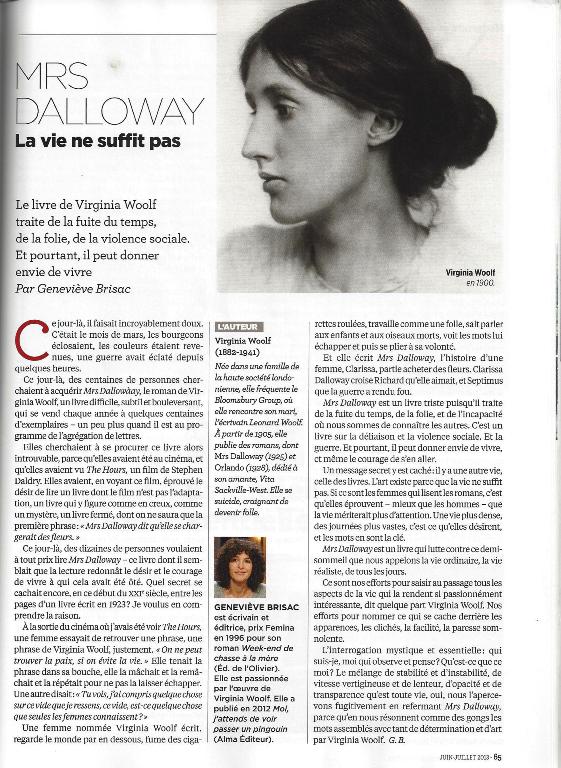
Một đời chẳng đủ. Phải vài đời mới đã La vie ne suffit pas: Đời sống không đủ. Câu dịch của GCC, bị lệch pha, theo ý của Kundera. 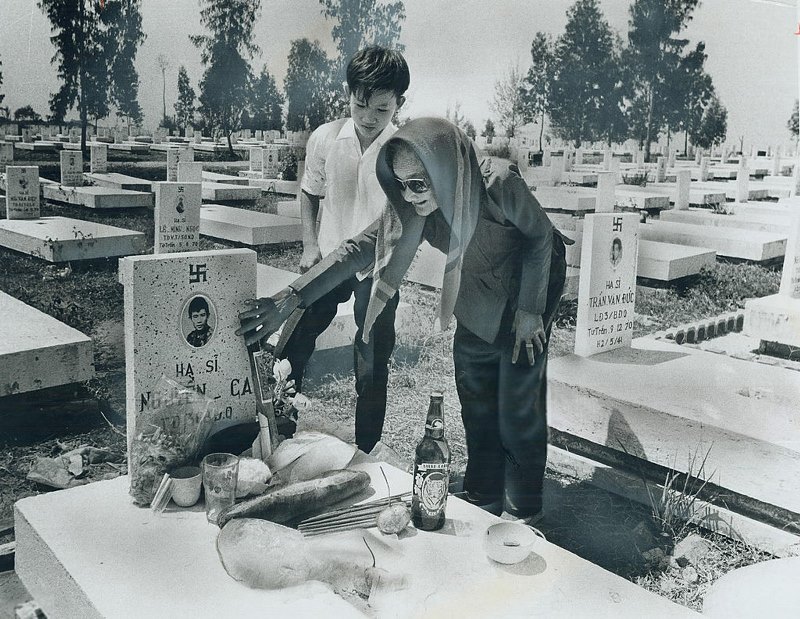
Nghĩa trang quân đội Biên Hòa 1973 |






